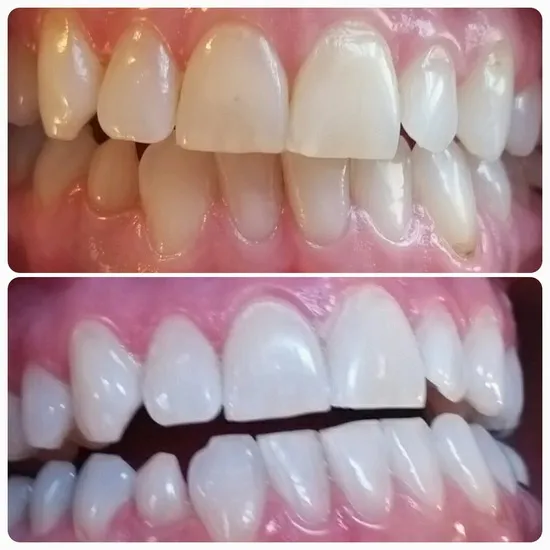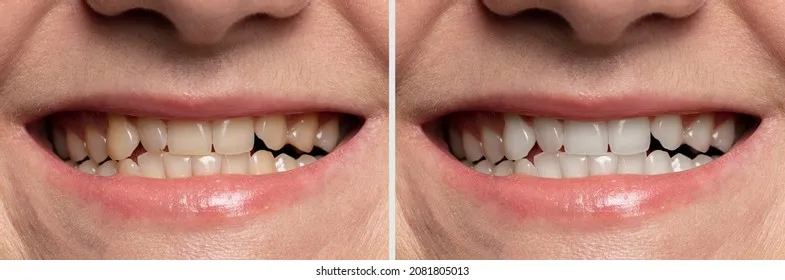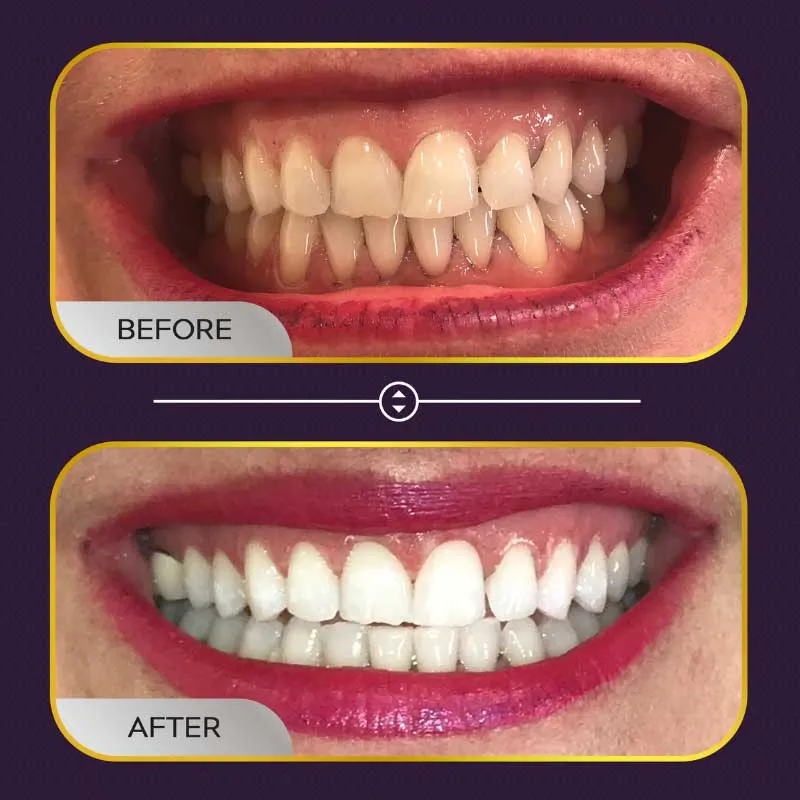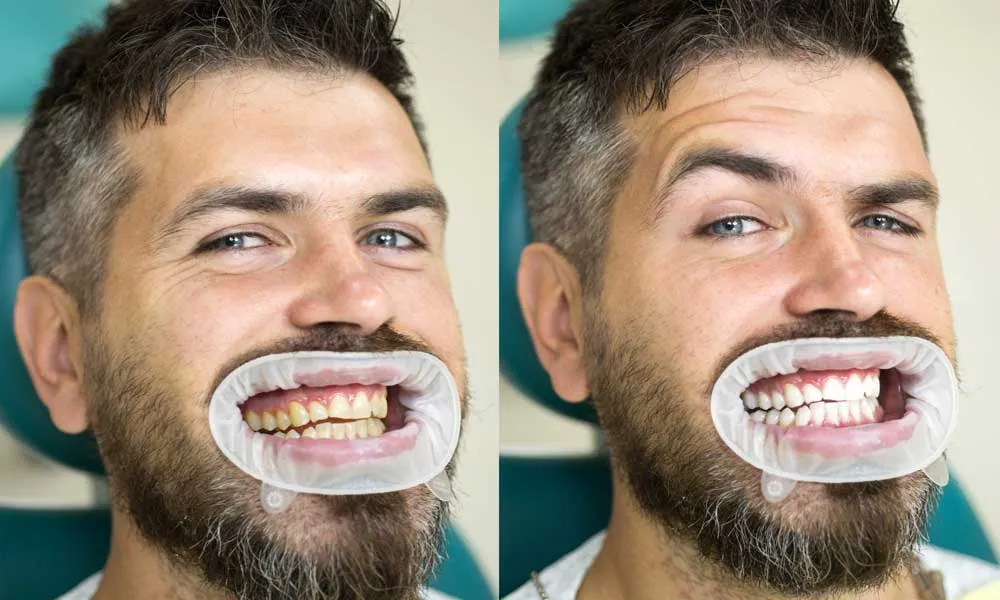Understanding Teeth Whitening Before & After
Teeth whitening is a popular cosmetic dental procedure designed to lighten the shade of your teeth and improve your smile. The ‘before and after’ results are often dramatic, showcasing the transformative power of professional and at-home treatments. This article will delve into the various aspects of teeth whitening, from the different types of treatments available to the factors that influence the final outcome, including a look at what full-face results might look like. Achieving a brighter smile can significantly boost your confidence and overall appearance, making teeth whitening a sought-after solution for those looking to enhance their facial aesthetics. The journey from discolored teeth to a dazzling smile is a rewarding one, and understanding the process is the first step.
What is Teeth Whitening
Teeth whitening, also known as teeth bleaching, is a cosmetic dental procedure aimed at lightening the shade of your teeth. This process involves removing stains and discoloration, restoring your teeth to a brighter, whiter appearance. Stains can accumulate on the enamel due to various factors, including the consumption of staining foods and beverages like coffee, tea, and red wine. Smoking and certain medications can also contribute to tooth discoloration. Teeth whitening treatments utilize bleaching agents, typically containing hydrogen peroxide or carbamide peroxide, to penetrate the enamel and break down the stain molecules. The effectiveness of teeth whitening varies based on the type of treatment, the severity of the stains, and individual tooth characteristics.
Types of Teeth Whitening Treatments

There are several types of teeth whitening treatments available, each with its own set of advantages and considerations. The two primary categories are professional treatments performed by a dentist and at-home whitening kits. Professional treatments, such as in-office whitening, offer the most immediate and often dramatic results. These procedures use a higher concentration of bleaching agents and can be completed in a single visit. At-home whitening kits, including custom-fitted trays and over-the-counter products, provide a more gradual approach. These kits typically involve wearing trays filled with a bleaching gel for a specified period each day or night. The best option for you depends on your specific needs, the degree of discoloration, and your budget.
Professional Teeth Whitening
Professional teeth whitening is conducted by a dentist in a clinical setting. It often yields the most significant and immediate results. The process typically involves a thorough cleaning of the teeth, followed by the application of a high-concentration bleaching agent. A special light or laser may be used to accelerate the whitening process. The entire procedure usually takes about an hour, and patients can often see several shades of improvement. Professional whitening is ideal for individuals with significant staining or those seeking rapid results. Dentists also ensure the safety of the procedure, minimizing the risk of sensitivity or gum irritation.
At-Home Teeth Whitening Kits
At-home teeth whitening kits offer a convenient and more affordable option for teeth whitening. These kits typically include custom-fitted trays or pre-filled strips containing a lower concentration of bleaching agent. Custom trays, prescribed by a dentist, provide a more precise fit and can enhance the effectiveness of the treatment. Over-the-counter kits are readily available and require no dental visit. However, the results may be less dramatic and take longer to achieve. It’s important to follow the instructions carefully to avoid any adverse effects. Consistent use is key to attaining the desired whitening results, and patients should discuss their plans with their dentist to ensure it is a safe and effective choice.
Factors Affecting Teeth Whitening Results

Several factors can influence the effectiveness and longevity of teeth whitening results. The type and severity of stains play a crucial role. Surface stains caused by food and drink are typically easier to remove than intrinsic stains, which are embedded within the tooth structure. The natural color of your teeth also impacts the final outcome; some individuals have teeth that whiten more readily than others. The presence of dental work, such as fillings or crowns, can affect the results. Whitening treatments do not change the color of these restorations, so they may appear mismatched after the procedure. It is critical to consider these factors during treatment planning to set realistic expectations.
The Importance of a Consultation
A consultation with your dentist is a crucial first step before undergoing any teeth whitening treatment. During this consultation, the dentist will examine your teeth and gums to assess your oral health and determine the cause of any discoloration. They will also discuss your expectations and recommend the most appropriate whitening method. This is also a chance to discuss any potential risks and side effects, such as tooth sensitivity. The dentist can create a tailored treatment plan, ensuring the process is safe and effective for your unique needs. They may also take initial photos to document the ‘before’ condition, providing a useful comparison after the whitening.
Teeth Whitening Before & After: Full Face Results
The impact of teeth whitening extends beyond just the teeth themselves. A brighter smile can significantly enhance your overall facial appearance. In ‘before and after’ comparisons, you’ll notice how a brighter smile can make your face appear more youthful, refreshed, and vibrant. The contrast created by whiter teeth can highlight your facial features, making your eyes appear brighter and your skin seem more radiant. The full face results can be transformative, boosting confidence and self-esteem. The before and after images often show a considerable difference, not just in the teeth’s shade but in the overall impression of the person’s appearance. Achieving the smile you desire can truly make a positive impact.
The Procedure of Teeth Whitening

The teeth whitening procedure varies depending on the chosen method (professional or at-home). In-office whitening typically begins with a thorough cleaning and preparation of the teeth. A protective barrier is then applied to the gums to prevent irritation. The whitening agent is applied to the teeth, and a special light or laser may be used to activate the whitening process. The procedure usually involves multiple cycles, each lasting around 15-20 minutes. For at-home whitening, the dentist will create custom trays or provide pre-filled strips. Patients then apply the bleaching gel according to the instructions, wearing the trays for a specific period each day or night. The entire process, whether in-office or at-home, demands careful adherence to instructions to ensure safety and effectiveness.
Taking Pre-Treatment Photos
Taking ‘before’ photos is an important part of the teeth whitening process. These photos serve as a baseline for comparison, allowing you and your dentist to assess the degree of improvement after treatment. The photos typically include full-face shots and close-ups of the teeth. They help to document the initial shade and any specific areas of discoloration. The ‘before’ photos are critical in tracking the progress and demonstrating the visible changes. During the consultation, the dentist will take the photographs. You can then compare them with ‘after’ photos to appreciate the transformation. It’s an excellent way to gauge the effectiveness of the treatment and celebrate the achievement of a brighter smile.
The Whitening Process
The whitening process involves the application of bleaching agents, such as hydrogen peroxide or carbamide peroxide, to the tooth enamel. These agents penetrate the enamel and break down the stain molecules, resulting in a lighter shade. Professional whitening treatments use higher concentrations of the bleaching agent, offering faster results. The whitening process can be repeated several times during a single office visit or over a period of weeks with at-home treatments. The duration of the whitening process depends on the type of treatment, the severity of the stains, and individual tooth characteristics. Following the dentist’s instructions is key to ensuring the process is effective and minimizing potential side effects.
Post-Treatment Care & Maintenance

After teeth whitening, proper care is crucial for maintaining the results and preventing future staining. You may experience some sensitivity immediately after the treatment. Avoid foods and beverages that can stain your teeth for the first few days. This includes coffee, tea, red wine, and dark-colored foods. Maintaining a consistent oral hygiene routine, including brushing twice a day, flossing, and using mouthwash, is also essential. Regular dental check-ups and professional cleanings can help maintain the brightness of your smile. Consider using a whitening toothpaste or a touch-up whitening kit recommended by your dentist to keep your teeth looking their best.
Maintaining Your White Smile
Maintaining your newly whitened smile requires a proactive approach. Avoiding staining foods and beverages, such as coffee, tea, and red wine, can prevent discoloration. If you consume these items, rinsing your mouth with water immediately afterward can help minimize staining. Smoking should be avoided, as it is a major cause of tooth discoloration. Maintaining a good oral hygiene routine, brushing twice daily, flossing, and using mouthwash, is essential. Regular dental check-ups and professional cleanings will also help to keep your teeth bright and healthy. Using a whitening toothpaste or a touch-up whitening kit as recommended by your dentist can also help to maintain the results of your teeth whitening treatment.
Dietary Considerations
Your diet plays a significant role in the longevity of your teeth whitening results. Certain foods and beverages can easily stain your teeth, leading to discoloration over time. Coffee, tea, red wine, and dark-colored juices are common culprits. Avoiding these or consuming them in moderation can help preserve your bright smile. Foods like berries, soy sauce, and curry can also stain your teeth. When you do consume staining foods or drinks, rinsing your mouth with water immediately afterward can minimize their impact. Incorporating a diet rich in fruits, vegetables, and dairy products supports overall oral health and helps maintain your teeth’s natural whiteness.
Oral Hygiene Routine

A consistent oral hygiene routine is crucial for maintaining your white smile and overall oral health. Brushing your teeth twice a day with fluoride toothpaste helps remove plaque and surface stains. Flossing daily removes food particles and plaque from between your teeth, where a toothbrush can’t reach. Using mouthwash can help kill bacteria and freshen your breath. Regular dental check-ups and professional cleanings are also essential. The dentist can remove any built-up plaque and tartar, which can contribute to discoloration and other dental problems. This consistent routine will help protect your teeth and gums, ensuring the best results from your whitening treatment.
Potential Risks and Side Effects
While teeth whitening is generally safe, some potential risks and side effects can occur. Tooth sensitivity is a common side effect, which usually subsides within a few days of treatment. Gum irritation can also occur if the bleaching agent comes into contact with the soft tissues. In rare cases, prolonged or excessive whitening can cause damage to the tooth enamel. It’s important to discuss these potential risks with your dentist before undergoing any teeth whitening procedure. Following the dentist’s instructions carefully can minimize these risks and ensure a safe and effective treatment. The dentist will assess the risks and tailor the treatment to your needs.
Sensitivity and Irritation
Tooth sensitivity is a common side effect of teeth whitening treatments. This occurs because the bleaching agents can temporarily make the tooth enamel more porous, allowing the nerves to become more sensitive. Sensitivity usually subsides within a few days after the treatment. Using toothpaste for sensitive teeth can help reduce sensitivity. Gum irritation can also occur if the bleaching agent comes into contact with the soft tissues of the mouth. This usually resolves quickly after the treatment. To minimize these side effects, follow your dentist’s instructions carefully and use the recommended products.
Infection Risks

Infection risks associated with teeth whitening are generally low. However, if you have any existing dental issues, such as cavities or gum disease, the bleaching process might exacerbate them. Ensure that you undergo a thorough dental examination before you begin any whitening treatment. The dentist will address any existing issues and determine if teeth whitening is the right choice for you. Following all the instructions, maintaining good oral hygiene, and attending regular dental check-ups can also reduce the chances of any complications, ensuring a safe and effective teeth whitening experience. Ignoring pre-existing conditions may increase the risk of infection.
Teeth Whitening Is it Right for You
Teeth whitening can be a highly effective way to enhance your smile and boost your confidence. However, it’s not suitable for everyone. Candidates should have healthy teeth and gums, without any untreated dental issues, like cavities or gum disease. If you have sensitive teeth, teeth whitening might not be the best choice or require special care. The results of the treatment may vary, depending on the degree of staining and individual tooth characteristics. Consulting with a dentist is essential to determine if teeth whitening is right for you, discussing your goals, assessing your oral health, and creating a personalized treatment plan. Ultimately, making the right decision can give you the smile you have always wanted.
